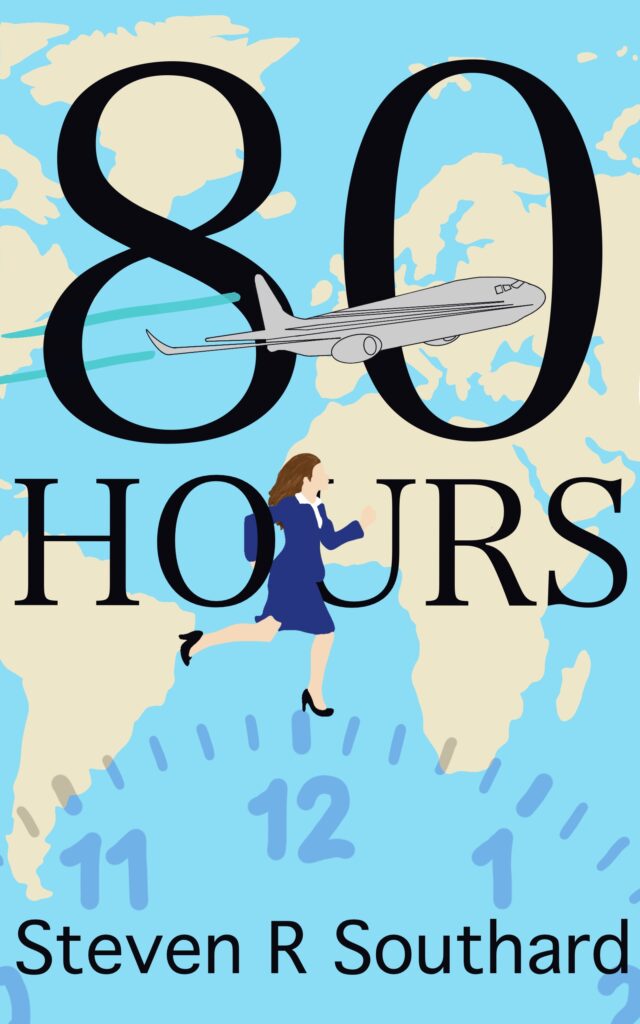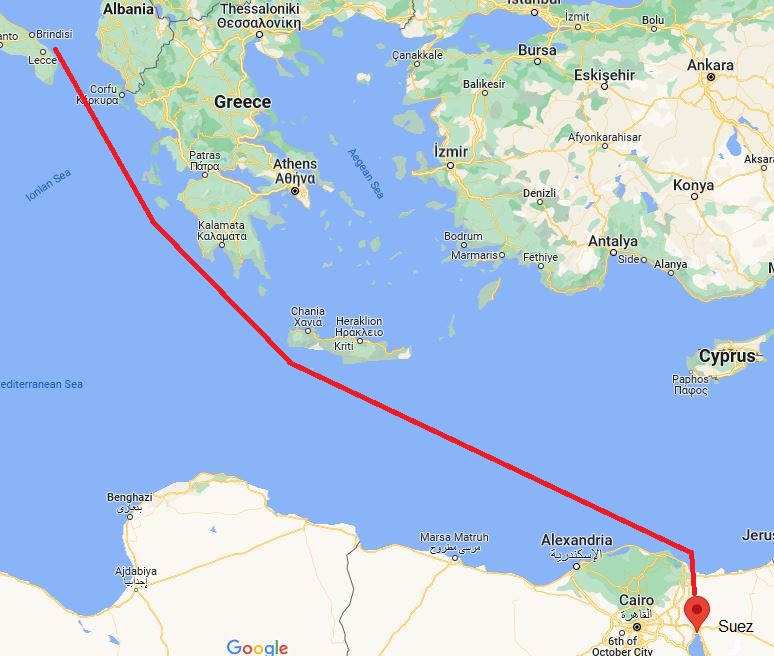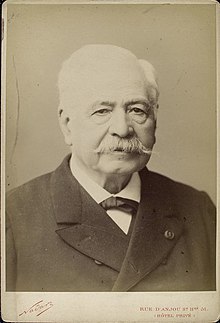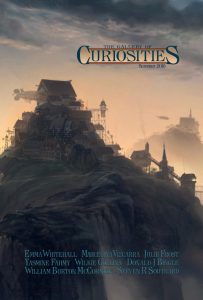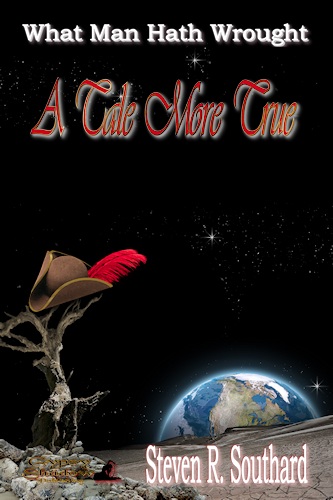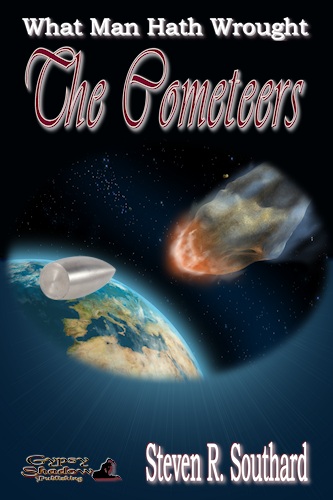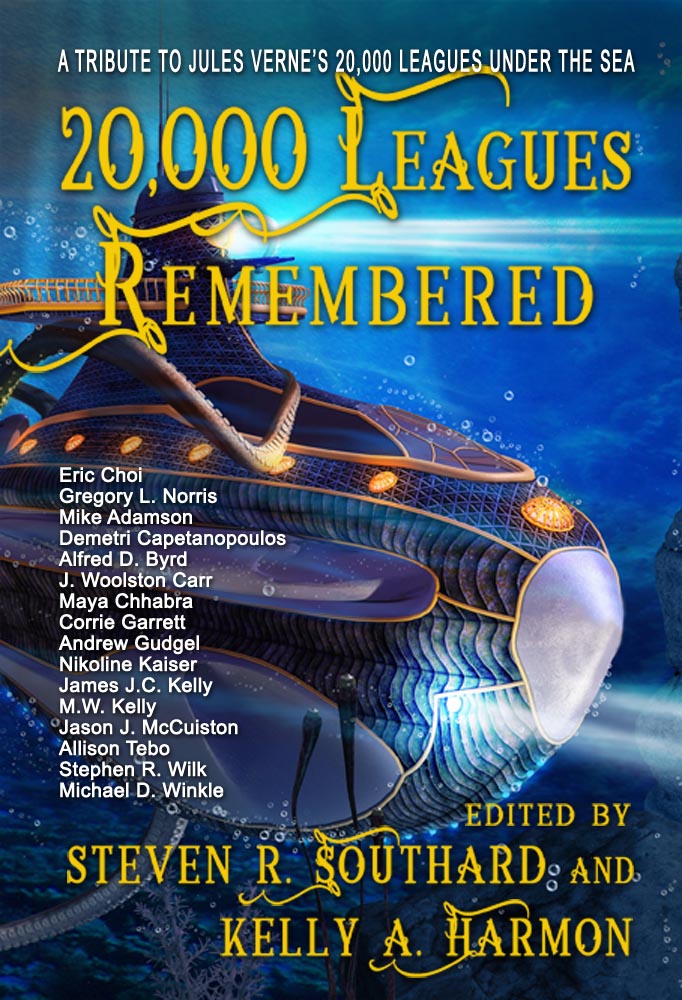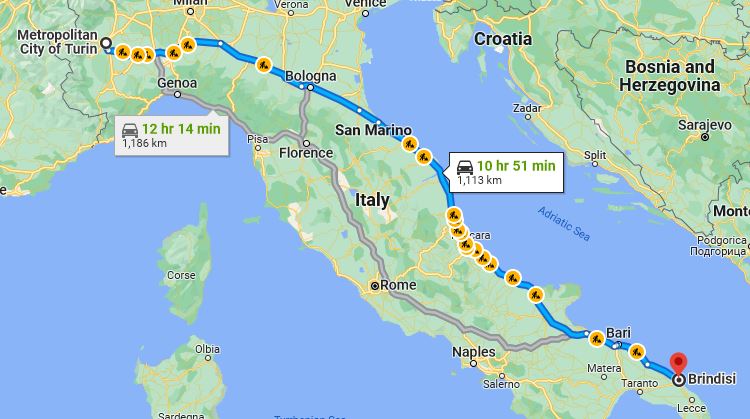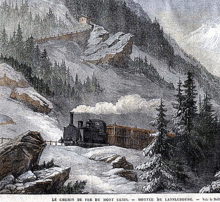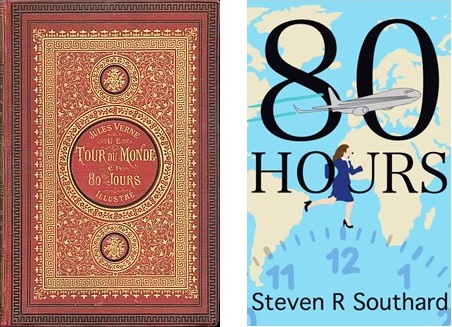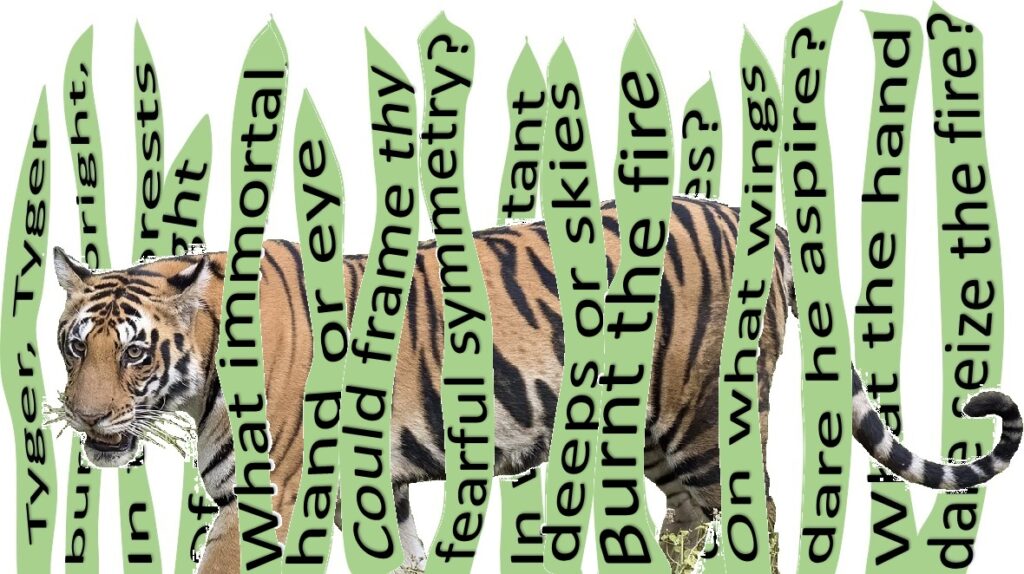It’s time to continue our around-the-world blog tour. We’re following the route of Phileas Fogg, 150 years to the day after his famous fictional trip. The steamship Mongolia sailed from Suez and reached Mumbai (known in Verne’s time as Bombay) at 4:30 pm today, October 20.
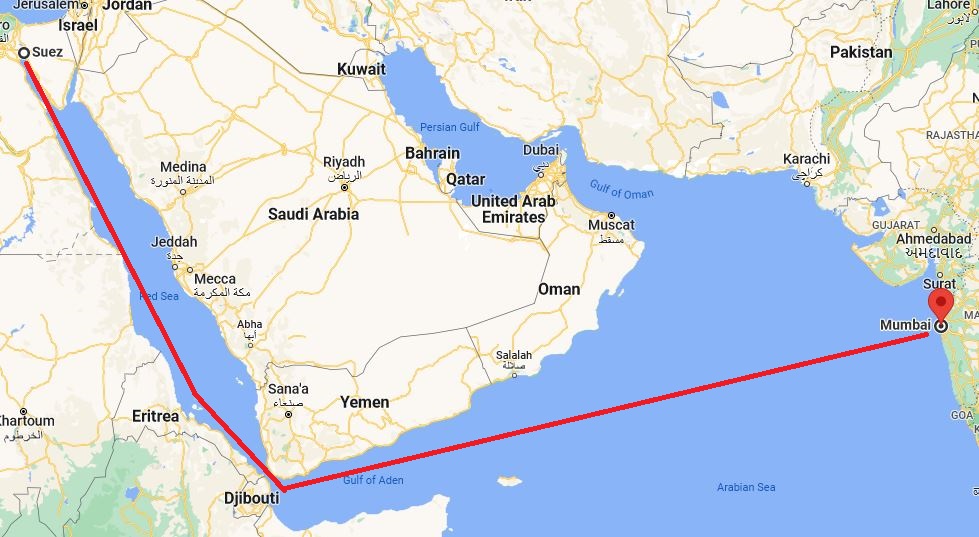
Fogg had traversed 6004 miles, or 24.5% of the distance in only 22.5% of his allotted time. About 2 days ahead of schedule, he seemed in good shape to win his wager. In 3 ½ hours, he had to catch his train to Kolkata (then spelled Calcutta) leaving at 8:00 pm.
He sent Passepartout out to purchase shoes and shirts, while he walked to the passport office for official proof of his arrival. Meanwhile, Detective Fix headed to the ‘Bombay’ police hoping the warrant arrived for Fogg’s arrest. It hadn’t.
His shopping completed, Passepartout got distracted and curious, and wandered into a Hindu pagoda at Malabar Hill without taking his shoes off. He escaped three Brahmin priests who chased after him and he almost missed the train.
In the time of the novel, 644,000 people called Bombay home and Sir Philip Edmond Wodehouse served as the Crown Governor of the ‘Bombay Presidency’ when England ruled the various pieces of the subcontinent. Today, the population surpasses 20.4 million, the President of India is Droupadi Murmu, the Vice President, Jagdeep Dhankhar, and the Prime Minister, Narendra Modi.
As for Malabar Hill, where Passepartout committed his sacrilegious act, that site contained several temples and some mansions for the wealthy at the time. Even more exclusive today, Malabar Hill counts among the top ten most expensive areas in the world.
Some of you may wonder when I’ll get to the novel’s balloon trip. I won’t, because there wasn’t one. Pressed for time, Fogg would never have considered a balloon. They move too slowly, and often in unintended directions. Every movie adapted from the novel features a balloon, but you won’t find one in the book. Read Five Weeks in a Balloon or The Mysterious Island if you want balloons from Verne.
Traveling from Suez to Mumbai today doesn’t require the 11 days Fogg needed. The drive to Cairo takes less than 2 hours and you can fly from there to Mumbai in about 9 hours, with a stop in either Muscat or Dubai.
That reduction in time from 11 days to 11 hours reminds me—you can grab my ebook, 80 Hours, at Scribd, Tolino, Vivlio, Amazon, Apple Books, Barnes & Noble, and Rakuten Kobo. It’s a modern adaptation of Verne’s novel.
The train whistle just blew at the Mumbai railroad station. Better get aboard. The steamer will leave from Kolkata in five days and we can’t miss it. (There may be a plot development four days from now.) Who’s we, you ask? None other than Fogg, Passepartout, Detective Fix (who hopped aboard to follow Fogg), as well as you and—
Poseidon’s Scribe


